Welcome to our free classical music site

Do you write about classical music? Are you a blogger? Want to team up with Classical Connect? Send us a message, let's talk!

Do you write about classical music? Are you a blogger? Want to team up with Classical Connect? Send us a message, let's talk!
April 30, 2012. The word “Wanderer” is close to our hearts these days. It connotes so many states and emotions: nostalgia, wistful retrospection, but also the optimistic sense of beginnings, of new possibilities. Franz Schubert, who didn’t travel much in his life, used the word Wanderer in the title of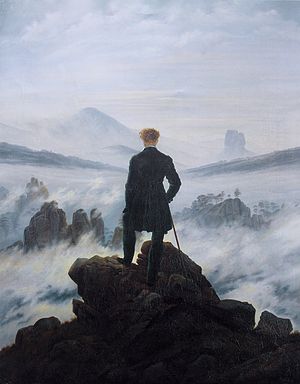 several very different pieces, and each time to denote a state of mind, not the body. In 1816, when he was just 19 but already entering his mature compositional period, he wrote a Lied Der Wanderer (D. 493) on the text by Georg Philipp Schmidt, a minor German poet. In the song, the protagonist, a "stranger everywhere," is searching for “his land,” his friends, a place he could call his own. This beautiful Lied is sung here by the incomparable German baritone Dietrich Fischer-Dieskau, with Gerald Moore on the piano (courtesy of YouTube).
several very different pieces, and each time to denote a state of mind, not the body. In 1816, when he was just 19 but already entering his mature compositional period, he wrote a Lied Der Wanderer (D. 493) on the text by Georg Philipp Schmidt, a minor German poet. In the song, the protagonist, a "stranger everywhere," is searching for “his land,” his friends, a place he could call his own. This beautiful Lied is sung here by the incomparable German baritone Dietrich Fischer-Dieskau, with Gerald Moore on the piano (courtesy of YouTube).
Six years later Schubert wrote a piano Fantasy, so technically demanding that he himself couldn’t play it at all. Schubert used the theme from Der Wanderer in the second movement of the Fantasy, the Adagio (Theme and Variations). That led it to be called Wanderer. You can listen to it here in performance by the Israeli-American pianist Alon Goldstein.
In 1826, only two years before his death and the year preceding the composition of the great Winterreise song cycle, Schubert wrote a Lied to the text of Johann Gabriel Seidl’s poem Der Wanderer an den Mond ("The Wanderer Speaks to the Moon"). It has a simple, almost folk-like tune, with the accompaniment imitating the chords of a guitar. "Happy is he, who wherever he goes, stands on his native soil" is the concluding line of the poem. This little gem (the songs is just a bit longer than two minutes) is sung by the baritone Thomas Meglioranza. Reiko Uchida is on the piano (here).
The illustration, Wanderer above the Sea of Fog, is by the German Romantic painter Caspar David Friedrich. It was made in 1818, just two years after Schubert wrote his first Wanderer.
April 30, 2012. The word “Wanderer” is close to our hearts these days. It connotes so many states and emotions: nostalgia, wistful retrospection, but also the optimistic sense of beginnings, of new possibilities. Franz Schubert, who didn’t travel much in his life, used the word Wanderer in the title of several very different pieces, and each time to denote a state of mind, not the body. In 1816, when he was just 19 but already entering his mature compositional period, he wrote a Lied Der Wanderer (D. 493) on the text by Georg Philipp Schmidt, a minor German poet. In the song, the protagonist, a "stranger everywhere," is searching for “his land,” his friends, a place he could call his own. This beautiful Lied is sung here by the incomparable German baritone Dietrich Fischer-Dieskau, with Gerald Moore on the piano (courtesy of YouTube).
several very different pieces, and each time to denote a state of mind, not the body. In 1816, when he was just 19 but already entering his mature compositional period, he wrote a Lied Der Wanderer (D. 493) on the text by Georg Philipp Schmidt, a minor German poet. In the song, the protagonist, a "stranger everywhere," is searching for “his land,” his friends, a place he could call his own. This beautiful Lied is sung here by the incomparable German baritone Dietrich Fischer-Dieskau, with Gerald Moore on the piano (courtesy of YouTube).
Six years later Schubert wrote a piano Fantasy, so technically demanding that he himself couldn’t play it at all. Schubert used the theme from Der Wanderer in the second movement of the Fantasy, the Adagio (Theme and Variations). That led it to be called Wanderer. You can listen to it here in performance by the Israeli-American pianist Alon Goldstein.
In 1826, only two years before his death and the year preceding the composition of the great Winterreise song cycle, Schubert wrote a Lied to the text of Johann Gabriel Seidl’s poem Der Wanderer an den Mond ("The Wanderer Speaks to the Moon"). It has a simple, almost folk-like tune, with the accompaniment imitating the chords of a guitar. "Happy is he, who wherever he goes, stands on his native soil" is the concluding line of the poem. This little gem (the songs is just a bit longer than two minutes) is sung by the baritone Thomas Meglioranza. Reiko Uchida is on the piano (here).
The illustration, Wanderer above the Sea of Fog, is by the German Romantic painter Caspar David Friedrich. It was made in 1818, just two years after Schubert wrote his first Wanderer.
PermalinkApril 23, 2012. Sergei Prokofiev was born on this day in 1891. He belonged to a "post-Tchaikovsky" generation of Russian greats, together with the somewhat older Rachmaninov, who was born in 1873, and Stravinsky, born in 1882. All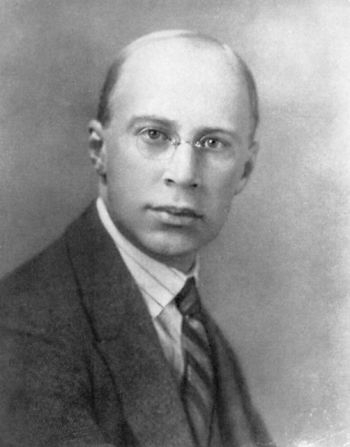 three became accomplished composers before the Revolution of 1917 and all three left Russia after it happened. But unlike Rachmaninov and Stravinsky, both of whom were quite anti-Soviet in their views, Prokofiev, after almost 20 years living in Europe, decided to return to the Soviet Union. It was never clear why he made this decision. He knew about the lack of artistic and political freedoms in the Soviet Union, and he had heard of the purges. Still, he returned. Part of the reason, it seems, was that his career in the West didn’t develop as well as he expected. Ambitious, brilliant, talented, he expected to become a great success when he first moved to the US. As successful as he was, however, the American public clearly preferred another émigré from Russia, the more conservative Rachmaninov. On a number of occasions, Prokofiev was overheard saying, "There is no room for me here while Rachmaninov is alive, and he will live another ten or fifteen years."
three became accomplished composers before the Revolution of 1917 and all three left Russia after it happened. But unlike Rachmaninov and Stravinsky, both of whom were quite anti-Soviet in their views, Prokofiev, after almost 20 years living in Europe, decided to return to the Soviet Union. It was never clear why he made this decision. He knew about the lack of artistic and political freedoms in the Soviet Union, and he had heard of the purges. Still, he returned. Part of the reason, it seems, was that his career in the West didn’t develop as well as he expected. Ambitious, brilliant, talented, he expected to become a great success when he first moved to the US. As successful as he was, however, the American public clearly preferred another émigré from Russia, the more conservative Rachmaninov. On a number of occasions, Prokofiev was overheard saying, "There is no room for me here while Rachmaninov is alive, and he will live another ten or fifteen years."
In 1920 he moved to Paris, but there he found himself competing with Stravinsky. For a Russian composer in Paris, the patronage of Sergei Dyagilev was very important. In the 1920s, Prokofiev wrote several ballets, but only The Prodigal Son became really successful. Stravinsky, on the other hand, already famous for his Petrushka and The Rite of Spring, had several hits with Pulcinella, the new version of Les noces, Apollo, and The Fairy’s Kiss. Still, if one considers Prokofiev’s output from 1918 through 1936, this period was extremely productive: he wrote several operas, among them The Love for Three Oranges and the updated version of The Gambler, three symphonies, Romeo and Juliet (ballet and the orchestral suite), the Third, Forth and Fifth piano concertos and also concertos for violin and cello, and many other works. Never quite a part of the Russian émigré community, sometime in the mid-20s Prokofiev began developing contacts with the Soviet musicians. For propaganda reasons, the Soviets were very keen on having him return. In 1927 Prokofiev accepted an invitation to tour the Soviet Union. His opera The Love for Three Orange was staged in the Mariinsky Theater; Mayakovsky and Meyerhold were also wooing him back. In1932 he started spending half of his time in Moscow, and by 1936 he had settled there permanently. As a person famous in Europe and America, he expected immunity from the oppressive Soviet state, and at the beginning it seemed to work that way: he was given a large apartment, a car with a driver, and was promised the unheard of privilege of unrestricted travel to the West. Unfortunately, these freedoms didn’t last. Almost immediately, the musical censors went to work, criticizing some of his music as not sufficiently "Social Realist," and by 1948 he, as well as Shostakovich and some other composers, were officially denounced as “formalists”; his works, written during the emigration, were banned and he lived his remaining years in virtual seclusion. He died on March 5, 1953, the same day as Stalin.Permalink
April 16, 2012. Two Trios by Schubert. In Schubert’s time the piano trio was a very popular form: home music making was common, and many pieces, originally written for the orchestra, were often arranged to be played on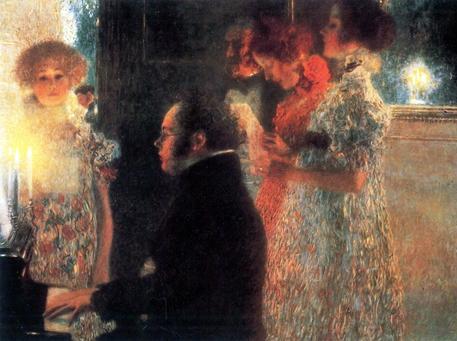 three instruments: the violin, cello, and piano. And of course by then a large volume of music was already written specifically for the trio. Haydn, the pioneer, wrote 45 of them, Mozart wrote six, Beethoven, in addition to arranging two of his symphonies, also wrote several trios, including the famous "Archduke." Schubert composed two of his trios at the very end of his short life. He started both of them in 1827, the year when, in an immense burst of creativity, he wrote several masterpieces, including the song cycle Winterreise, the last three piano sonatas, the Mass in E-flat Major, and the String Quartet D. 956. It is thought that the first trio, the one in B Major, was finished in 1828, the year of Schubert’s death; it wasn’t published till 1836. The listener might not guess that this bright, lively and utterly charming piece, about which Robert Schumann said, “One glance at Schubert's Trio and the troubles of our human existence disappear and all the world is fresh and bright again," was written almost at the same time as the tragic Winterreise, and by a severely ill composer. The trio is in a classical four-movement form (Allegro, Andante, Scherzo, Rondo); it is performed here by the Tecchler Trio (Benjamin Engeli, piano, Esther Hoppe, violin, and Maximilian Hornung, cello).
three instruments: the violin, cello, and piano. And of course by then a large volume of music was already written specifically for the trio. Haydn, the pioneer, wrote 45 of them, Mozart wrote six, Beethoven, in addition to arranging two of his symphonies, also wrote several trios, including the famous "Archduke." Schubert composed two of his trios at the very end of his short life. He started both of them in 1827, the year when, in an immense burst of creativity, he wrote several masterpieces, including the song cycle Winterreise, the last three piano sonatas, the Mass in E-flat Major, and the String Quartet D. 956. It is thought that the first trio, the one in B Major, was finished in 1828, the year of Schubert’s death; it wasn’t published till 1836. The listener might not guess that this bright, lively and utterly charming piece, about which Robert Schumann said, “One glance at Schubert's Trio and the troubles of our human existence disappear and all the world is fresh and bright again," was written almost at the same time as the tragic Winterreise, and by a severely ill composer. The trio is in a classical four-movement form (Allegro, Andante, Scherzo, Rondo); it is performed here by the Tecchler Trio (Benjamin Engeli, piano, Esther Hoppe, violin, and Maximilian Hornung, cello).
The second trio, in E-flat Major, D.929, was written in November of 1827, just weeks after the first one. Schubert heard very few performances of his last compositions, but this one he did, as it was played in January of 1828 at a private party for his good friend, Josef von Spaun. Very different in tenor than the sunny B-flat Major trio, it is much more dramatic and moody. Stanley Kubrick, the movie director, brilliantly used the second movement of the trio, Andante con moto to create an unsettling, anxious atmosphere of his film Barry Lyndon. The complete trio is performed here by Bella Hristova, violin, Dane Johansen, cello, and Adam Golka, piano.
(Illustration: Schubert at the piano, Gustav Klimt, 1899. At that time Klimt was havinig a love affair with the young Anna Schindler who was soon to become Anna Mahler) Permalink
April 9, 2012. The Ukrainian-born pianist Anna Shelest has delighted audiences throughout the world. Born in Kharkiv, the second-largest city of Ukraine, she began her piano studies at the age of six. She attended the Kharkiv Special Music School for Gifted Children, and at the age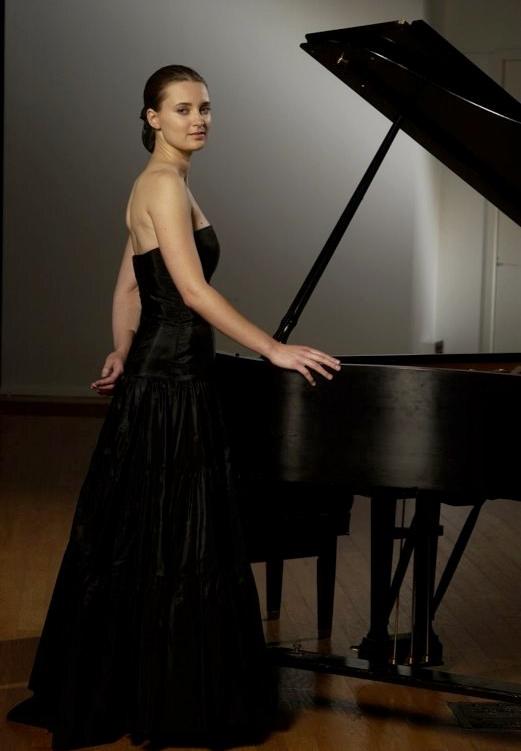 eleven she performed at the UNESCO Headquarters in Paris as the youngest prize-winner of the Milosz Magin International Piano Competition. Anna continued her education in the US, first with Sergei Polusmiak at Northern Kentucky University and privately with Eugene and Elizabeth Pridonoff of the University of Cincinnati College Conservatory of Music. She then entered the Juilliard School and received her Masters in Music in the class of Jerome Lowenthal. Anna won awards in a number of international piano competitions, including the Louisiana International Piano Competition; the Kawai American Recording Contest; and the Jefferson Symphony Young Artists Competition in Denver, among others.
eleven she performed at the UNESCO Headquarters in Paris as the youngest prize-winner of the Milosz Magin International Piano Competition. Anna continued her education in the US, first with Sergei Polusmiak at Northern Kentucky University and privately with Eugene and Elizabeth Pridonoff of the University of Cincinnati College Conservatory of Music. She then entered the Juilliard School and received her Masters in Music in the class of Jerome Lowenthal. Anna won awards in a number of international piano competitions, including the Louisiana International Piano Competition; the Kawai American Recording Contest; and the Jefferson Symphony Young Artists Competition in Denver, among others.
Ms. Shelest made her orchestral debut at age 12 with the Kharkiv Symphony Orchestra, playing Rachmaninov's Piano Concerto No. 1. Since then she has performed on many prestigious stages around the world. In the spring of 2010 she debuted at the Alice Tully Hall and at Stern Auditorium at Carnegie Hall in New York City. She played at the Great Hall of Moscow Conservatory, the Palacio de Bellas Artes in Mexico City, and gave recitals in Canada, France, Japan, Mexico, Netherlands, and South Africa. As a soloist she performed with some of the world’s most renowned orchestras, such as the Montreal Symphony, St. Petersburg Philharmonic Orchestra, Cincinnati Symphony Orchestra, under Maestro Paavo Jarvi, and the Netherlands Symphony Orchestra. Among her other appearances are with the Cincinnati Chamber Orchestra, Corpus Christi Symphony Orchestra, Northwest Florida Symphony Orchestra, and Kentucky Symphony Orchestra.
An avid chamber musician, Ms. Shelest established the successful Shelest Piano Duo with her husband Dmitry (in 2011 they won the Bradshaw-Buono International Piano Competition). She’s also collaborated with the Amernet String Quartet, Cincinnati ARC Ensemble, and musicians from the Cincinnati Symphony Orchestra.
Recently Anna played a concert in Chicago. On her program was Beethoven’s Sonata No. 24 in F-sharp Major, Op. 78 (here) and Nocturne No.6, Op. 63 in D-flat Major by Gabriel Fauré (here). While her repertoire is wide, covering music from the Baroque to contemporary, she has a special affinity for Russian piano music. She recently released a CD of Rachmaninov’s Etudes-tableaux op. 39 and Moments Musicaux op. 16 and another one with Mussorgsky’s Pictures at an Exhibition as well as works by Tchaikovsky and Glinka. Here’s Valse in A Flat Major, Op. 40 No. 8 by Tchaikovsky. You can listen to Mikhail Glinka’s romance The Lark in the piano transcription by Mily Balakirev here. Permalink
April 2, 2012. Rachmaninov and Busoni. Sergei Rachmaninov was born on April 1, 1873. The last composer in the Russian tradition of the 19th century and a great admirer of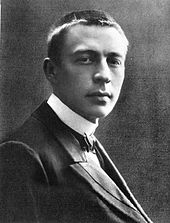 Tchaikovsky, he wrote music that was unaffected be new developments in the early 20th century and continued writing in the romantic style even as composers like Schoenberg, Stravinsky and Bartók were developing completely different and new idioms. Rachmaninov was born into a family of Russian aristocracy and spend his early years in Semyonovo, the family estate in the Northwestern part of Russia. He stared piano lessons with his mother at the age of four and continued with a professional teacher that was brought from St-Petersburg. At the age of ten he entered the St-Petersburg conservatory. Not the most diligent pupil, he failed some examinations before moving to the Moscow Conservatory in 1884 to study under a great disciplinarian Nikolai Zverev; the transfer was arranged by Alexander Siloti, a talented pianist and a relative of the Rachmaninovs (among Zverev’s other pupils were Scriabin, and two of the founders of the Soviet school of pianism, Konstantin Igumnov and Alexander Goldenweiser). While at the Conservatory, Rachmaninov wrote the first version of his Piano Concerto no. 1, Trio élégiaque No. 1 (you can listen to it here in the performance of Jupiter Trio), and several other pieces. For his graduation he wrote a one-act opera Aleko based on Pushkin’s poem The Gypsies. The opera was a success, the Bolshoi Theater staged it one year later with Tchaikovsky attending the premier, and on the 100th anniversary of Pushkin, in 1899, the great bass Feodor Chaliapin performed the title role in St-Petersburg. Rachmaninov graduated the Conservatory with the gold medal, which he shared with Scriabin and Josef Lhévinne, the pianist and future husband of Rosina Lhévinne, the famed Juilliard piano teacher. Soon after Rachmaninov wrote the Prelude in C-sharp minor, which made him famous. A piano roll recording of Rachmaninov performing this prelude has been preserved, and you can listen to it here, played on a Bösendorfer Reproducing Piano (courtesy of YouTube). Less than a year later Tachaikovsky, a mentor and a friend, died at the age of 53. It was a personal blow to Rachmaninov, who immediately wrote the second Trio élégiaque in Tchaikovsky’s memory. In some sense this episode marked the end of Rachmaninov’s youthful period.
Tchaikovsky, he wrote music that was unaffected be new developments in the early 20th century and continued writing in the romantic style even as composers like Schoenberg, Stravinsky and Bartók were developing completely different and new idioms. Rachmaninov was born into a family of Russian aristocracy and spend his early years in Semyonovo, the family estate in the Northwestern part of Russia. He stared piano lessons with his mother at the age of four and continued with a professional teacher that was brought from St-Petersburg. At the age of ten he entered the St-Petersburg conservatory. Not the most diligent pupil, he failed some examinations before moving to the Moscow Conservatory in 1884 to study under a great disciplinarian Nikolai Zverev; the transfer was arranged by Alexander Siloti, a talented pianist and a relative of the Rachmaninovs (among Zverev’s other pupils were Scriabin, and two of the founders of the Soviet school of pianism, Konstantin Igumnov and Alexander Goldenweiser). While at the Conservatory, Rachmaninov wrote the first version of his Piano Concerto no. 1, Trio élégiaque No. 1 (you can listen to it here in the performance of Jupiter Trio), and several other pieces. For his graduation he wrote a one-act opera Aleko based on Pushkin’s poem The Gypsies. The opera was a success, the Bolshoi Theater staged it one year later with Tchaikovsky attending the premier, and on the 100th anniversary of Pushkin, in 1899, the great bass Feodor Chaliapin performed the title role in St-Petersburg. Rachmaninov graduated the Conservatory with the gold medal, which he shared with Scriabin and Josef Lhévinne, the pianist and future husband of Rosina Lhévinne, the famed Juilliard piano teacher. Soon after Rachmaninov wrote the Prelude in C-sharp minor, which made him famous. A piano roll recording of Rachmaninov performing this prelude has been preserved, and you can listen to it here, played on a Bösendorfer Reproducing Piano (courtesy of YouTube). Less than a year later Tachaikovsky, a mentor and a friend, died at the age of 53. It was a personal blow to Rachmaninov, who immediately wrote the second Trio élégiaque in Tchaikovsky’s memory. In some sense this episode marked the end of Rachmaninov’s youthful period.
We also remember the Italian pianist and composer Ferruccio Busoni, who was born on April 1,1866. A child prodigy, he started performing at the age of seven. On a tour in Vienna in 1975 he met Liszt, Brahms and Anton Rubinstein and heard Liszt play. He taught piano in several cities of Europe and in the US and eventually settled in Berlin. Busoni had a large number of piano students, many of whom became famous and started their own piano schools. He also taught composition; among his students were Edgard Varèse and Kurt Weill. Busoni was an interesting composer, but these days he’s much better known for his piano transcriptions of the music of Bach. Here is a piano roll recording of Busoni playing his famous transcription of the Chaconne from the Partita No. 2 in D minor for solo violin, BWV 1004.Permalink
March 26, 2012. Bartók and Haydn. The anniversary of the great Hungarian composer Béla Bartók was this past Sunday, March 25. He was born in 1881 in what was then the Dual Monarchy of Austria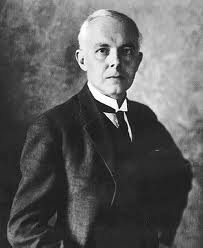 and Hungary, in a small town of Nagyszentmiklós (Great Saint Nickolas in Hungarian; after World War I as the town, and most of the regions of Banat and Transylvania reverted to Romania, its name was changed to Sânnicolau Mare, which means exactly the same, only in Romanian). When he was five, his mother began giving him regular piano lessons. At the age of 19 he moved to Budapest and started lessons with István Thomán, a pupil of Franz Liszt. While there, he met Zoltán Kodály who became his lifelong friend. By 1907 Bartók was teaching piano at the Royal Academy. Among his students were Fritz Reiner and Georg Solti, two Hungarian Jewish kids who became world-famous conductors and whose careers pinnacled at the Chicago Symphony Orchestra (Reiner was the CSO’s music director from 1952 to1963, Solti from 1969 to 1991). Both were champions of Bartók’s music. The period between the two world wars was tremendously productive for Bartók. Starting with the ballet The Miraculous Mandarin in 1918, he wrote string quartets, two piano concertos, Music for Strings, Percussion and Celesta, and a large number of piano pieces and songs. In 1940 Bartók, who was opposed to Nazism, emigrated to the US. He never felt comfortable in America, and was not as productive as in previous years, although not long before his death he created one of his masterpieces, Concerto for Orchestra. The last years of his life Bartók was quite ill; in 1944 he was diagnosed with Leukemia. He died on September 26, 1945 in New York. His remains were transferred to Hungary and he was given a state funeral in 1988. We’ll hear Romanian Folk Dances, based on the folk tunes of Transylvania that Bartók himself collected around 1910; it is performed by Camerata Chicago, Drostan Hall conductor (here).
and Hungary, in a small town of Nagyszentmiklós (Great Saint Nickolas in Hungarian; after World War I as the town, and most of the regions of Banat and Transylvania reverted to Romania, its name was changed to Sânnicolau Mare, which means exactly the same, only in Romanian). When he was five, his mother began giving him regular piano lessons. At the age of 19 he moved to Budapest and started lessons with István Thomán, a pupil of Franz Liszt. While there, he met Zoltán Kodály who became his lifelong friend. By 1907 Bartók was teaching piano at the Royal Academy. Among his students were Fritz Reiner and Georg Solti, two Hungarian Jewish kids who became world-famous conductors and whose careers pinnacled at the Chicago Symphony Orchestra (Reiner was the CSO’s music director from 1952 to1963, Solti from 1969 to 1991). Both were champions of Bartók’s music. The period between the two world wars was tremendously productive for Bartók. Starting with the ballet The Miraculous Mandarin in 1918, he wrote string quartets, two piano concertos, Music for Strings, Percussion and Celesta, and a large number of piano pieces and songs. In 1940 Bartók, who was opposed to Nazism, emigrated to the US. He never felt comfortable in America, and was not as productive as in previous years, although not long before his death he created one of his masterpieces, Concerto for Orchestra. The last years of his life Bartók was quite ill; in 1944 he was diagnosed with Leukemia. He died on September 26, 1945 in New York. His remains were transferred to Hungary and he was given a state funeral in 1988. We’ll hear Romanian Folk Dances, based on the folk tunes of Transylvania that Bartók himself collected around 1910; it is performed by Camerata Chicago, Drostan Hall conductor (here).
Like Bartók,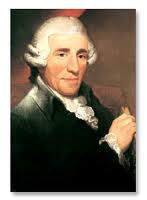 Franz Joseph Haydn was also born in Austria-Hungarian realm, but on the Austrian side, in a small village of Rohrau near the border with Hungary. His birthday is March 31, 1732. Haydn’s parents noticed his musical talents when he was a child and sent six year old Josef to live with their relative, a schoolteacher and choirmaster in Hainburg, a small town nearby. He lived in poverty and hunger but learned to play the harpsichord and violin. He also had a good voice, which brought him to Vienna as a chorister at the St. Stephen Cathedral, the musical center of the Empire. In 1749, as he lost his boy soprano voice, Haydn was kicked out of the choir. For the next 12 years he lead an uneasy life of a freelancing music teacher, accompanist, organ player, and also a composer. He eventually was hired by the Esterházy, one of the wealthiest families in the empire. He soon became the Kapelmeister with many responsibilities as composer, player and person in charge of the orchestra. Haydn lived in the Esterházy’s estates in Eisenstadt and later in the newly built grand estate of Esterháza. It was there that Haydn composed three piano sonatas, numbers 25, 26, and 27 in the Hoboken catalogue. They’re performed by Nina Tichman, an American pianist living in Germany. Sonata 25 in E-flat major is here, number 26 in A Major is here, and number 27 G major is here.Permalink
Franz Joseph Haydn was also born in Austria-Hungarian realm, but on the Austrian side, in a small village of Rohrau near the border with Hungary. His birthday is March 31, 1732. Haydn’s parents noticed his musical talents when he was a child and sent six year old Josef to live with their relative, a schoolteacher and choirmaster in Hainburg, a small town nearby. He lived in poverty and hunger but learned to play the harpsichord and violin. He also had a good voice, which brought him to Vienna as a chorister at the St. Stephen Cathedral, the musical center of the Empire. In 1749, as he lost his boy soprano voice, Haydn was kicked out of the choir. For the next 12 years he lead an uneasy life of a freelancing music teacher, accompanist, organ player, and also a composer. He eventually was hired by the Esterházy, one of the wealthiest families in the empire. He soon became the Kapelmeister with many responsibilities as composer, player and person in charge of the orchestra. Haydn lived in the Esterházy’s estates in Eisenstadt and later in the newly built grand estate of Esterháza. It was there that Haydn composed three piano sonatas, numbers 25, 26, and 27 in the Hoboken catalogue. They’re performed by Nina Tichman, an American pianist living in Germany. Sonata 25 in E-flat major is here, number 26 in A Major is here, and number 27 G major is here.Permalink